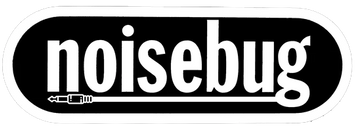Doepfer - A-112V: Sampler & Wavetable OSC
$216.00
DescriptionToggle
Manufacturer Description:
Module A-112 is the combination of a voltage controlled 8 Bit Sampler and a wavetable oscillator.On top of it the module is able to generate some special effects. A-112 was designed as anadditional sound source with the typical sounds of the early 8 bit samplers and is notcomparable with the modern polyphonic MIDI samplers available on the market.
Sampling mode: 8 bit audio resolution, 128kB memory in 2 banks 64kB each(equivalent to 2 seconds of sampling time for each bank with 32 kHz sampling rate), audioinput with attenuator, overload display in record mode (gate LED), possibility of MIDIDump to store sounds in a computer via MIDI, non volatile memory for the 2 samples in themodule, manual tune control for adjustment of sampling rate for record and play, CV input(~ 1V/Oct), both manual tune and CV determine the sampling rate respectively the pitch(pitch range is 5 octaves), gate input (not a trigger:the sample starts at the positive edge of the gate signal and is played as long as gate ishigh or until the end of the sample is reached), manual Gate button, non filtered audiooutput (thus quantizing noise can be used as an element of the sound intentionally)
Wavetable mode: special appearance of the sampling mode when playing a sample, theaudio input is now used as a second control voltage input for moving through the sample in256 byte wide loops (wavetables). The control voltage required to move throughall wavetables applied to the input "Wave CV In" is in the range -2.5V(wavetable 1) ... 0V (wavetable 127) ... +2.5V (wavetable 256) when control"Atten." is set fully clockwise. To achieve the typical wavetable oscillator sounds thesampling memory must contain corresponding wavetable data (e.g. loaded via MIDI dump).These data contain a set of wavetables with different harmonic content (e.g. a filtersweep) to get the typical wavetable sound while moving through the tables viaCV. But youmay also use a "normal" sample and go through the sample with CV to obtainpartially amazing sounds never heard before. You may use for example sampled speech and gowith CV through the syllables or speech shreds to get really very extreme sounds.An ideal addition for this feature is the Offset/Attentuator module which can be used to adjust the position of the wavetable (Offset) and themodulation depth (Att.). The corresponding jumper of the has to be set to bipolar offset (as the A-112 requires -2.5V...+2.5V to passthrough all 256 wavetables). As modulation source an LFO (A-145, A-146, A-147,A-143-3), ADSR (A-140, A-141, A-142, A-143-1/2) or a random voltage (,) may be used. Even a ribbon controller (or ), the Theremin module ,the Joystick or the Wheels module are useful to drive through the wavetables.
Effects: Additionally the module offers - in a way free of charge - some effects likedelay, reverse delay, pitch shiftinng or freeze. But it has to be pointed out that due tothe 8 bit audio resolution these effects are not comparable to high quality effect unitsand should be understand as an extra for nothing. The A-112 is not an effects unit !
The sampling time of the A-112 is about 1...30 secondscorresponding to a sampling frequency range of about 60kHz...2kHz (64kB@60kHz ~1 s, 64kB@2kHz ~ 30 s).
Technical note: the module uses a battery for thenon-volatile storage of the sampling data. Batteries have a limited lifespan andhave to be inspected at least every two years.

Eurorack
Eurorack is Doepfer's 3U modular format


